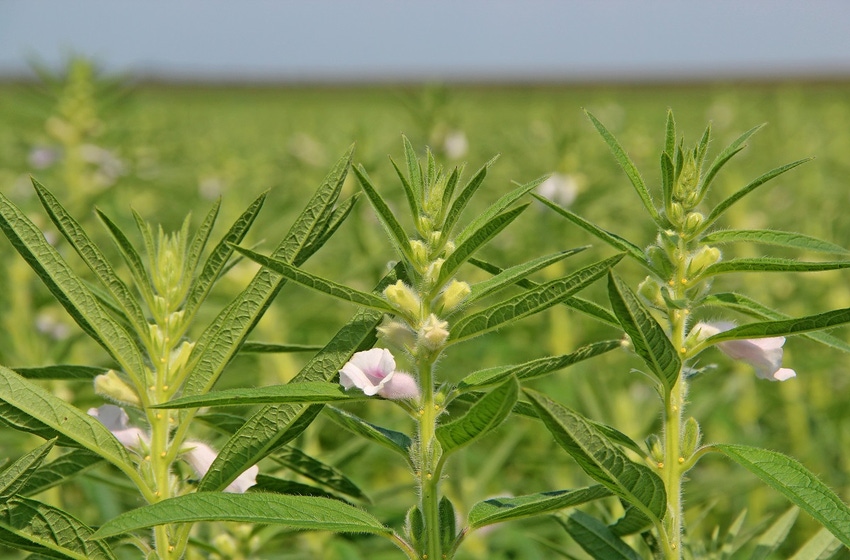
It’s hog-proof, deer-proof, cattle don’t like it, horses won’t eat it — and it doesn’t appeal to sheep either. Disease pressure is infrequent and yield potential is good with as little as 12 inches of water.
Sesame may not be a magic crop that solves all the production challenges for Southwest farmers, but it may offer a viable alternative or profitable rotation crop for more traditional enterprises.
“High yields (from 1,200 to 1,600 pounds per acre), with minimal insect and disease pressure, have growers all over Texas growing this ‘new’ crop,” says Charles Stichler, Stichler Agricultural Services, Knippa, Texas.
For the latest on southwest agriculture, please check out Southwest Farm Press Daily and receive the latest news right to your inbox.
Speaking at the recent Texas Plant Protection Association annual conference at Bryan, he said the state’s farmers planted more than 135,000 acres of sesame last year — with 60,000 acres planted south of Austin. Release by Sesaco of new non-dehiscent (doesn’t open spontaneously at maturity to release seeds) varieties in 2008, and labeling of glyphosate as a harvest aid, make sesame production more feasible by allowing harvest with grain combines, “with a minimal amount of seed loss prior to and during harvest.” Stichler says farmers need to install small grain screens on combines for harvest.
Sesame is a good option in fields frequently damaged by deer or wild hogs. “It’s not palatable to cattle, sheep, deer, horses or wild hogs,” he says. It also does well in arid climates and is drought- and heat-tolerant. “It doesn’t like a lot of humidity, which may encourage foliar diseases. Sesame may make maximum yields with as little as 12 inches to 15 inches of water.”
Corn, he says, requires from 22 inches to 24 inches; soybeans need from 17 to 19 inches; cotton needs from 19 to 22 inches; but sesame does well with 12 to 15 inches. Stichler says potential for insurance coverage through the Risk Management Agency would be another advantage for sesame.
PHYSIOLOGY SIMILAR TO COTTON
It’s a hardy plant, coming from the same family as devil’s claw weed, but grows much like cotton, setting nodes up the stalk. “Plant physiology is similar to cotton, with nodes above white flower a signal point to apply harvest aids,” he says. “At five nodes below the terminal, we need to start thinking about harvest. We can schedule irrigation based on evapotranspiration.”
Plant bugs and an African cluster bug may cause some damage occasionally, Stichler says. “With too much water, we may see some foliar diseases, but we’ve seen no cotton root rot in sesame.”
Seeding date may be flexible. “We’ve planted as late as August and still harvested 1,000 pounds per acre,” he says. Planting depth also offers some wiggle room. “Seed will germinate from on top of the soil to 2-1/4 inches deep.”
Sesame needs about 120 pounds of nitrogen per acre, 30 pounds of phosphorus, and 80 pounds of potassium. From 8 pounds to 9 pounds of nitrogen will make 100 pounds of sesame seed. It needs 2 pounds of phosphorus for each 100 pounds of production, and on sandy soils or in double-crop situations, sesame needs potassium. Some fertility can be accomplished through the pivot.
Prices have been good for the past few years — 50 cents per pound in 2013 and 45 cents in 2015. “Price for 2016 is a question mark,” Stichler says.
He says timing, for sesame, as for other crops, is a crucial factor. “The difference between a good farmer and an average farmer is two days,” he says. “Timing is important.”
About the Author(s)
You May Also Like






